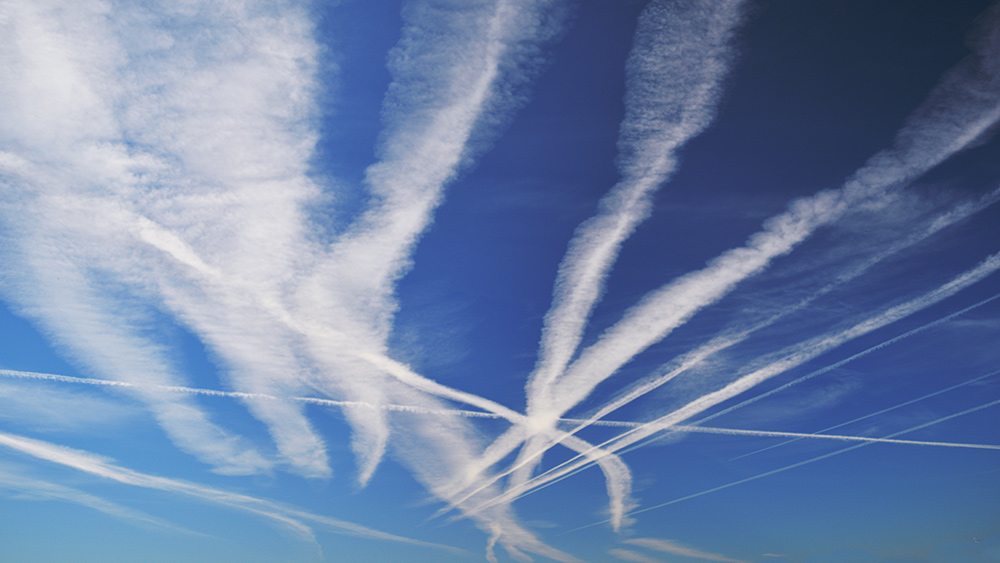Over 100 million Americans under HEATWAVE ALERTS as scorching temperatures continue to sweep across the U.S.
07/19/2023 / By Laura Harris

The National Oceanic and Atmospheric Administration (NOAA) has reported that last month was likely the hottest June ever recorded. Now, the National Weather Service (NWS) has issued a series of excessive heat warnings and advisories for over a dozen states, urging residents to limit outdoor activities to reduce the risk of heat-related illnesses.
The south and southwest regions of the U.S. are bracing themselves for even more extreme conditions. Heat.gov, the web portal for the National Integrated Heat Health Information System (NIHHIS), stated that more than 100 million Americans are under heatwave alerts as scorching temperatures continue to sweep across the country.
Forecasters are predicting triple-digit temperatures across most of Texas, California and the southwest, with the exception of coastal areas and mountains. In certain desert southwest locations, temperatures are expected to reach 110s and 120s Fahrenheit.
Individuals seeking relief by engaging in outdoor activities during the mornings will be disappointed, as morning lows in many areas are expected to remain uncomfortably high. For instance, Phoenix may experience low to mid-90s in the mornings over the next few days. On Thursday, June 13, the city witnessed a sweltering low of 95 degrees – just one degree shy of the city’s all-time hottest low temperature.
Weather forecasts indicate that the high-pressure dome will continue moving across the southern part of the country throughout the week. Inland California and Texas, Nevada, New Mexico, western Colorado, Arizona and Utah are also expected to experience daily record highs.
The heat wave is driven by a heat dome, which is an area of high pressure in the upper atmosphere. This atmospheric phenomenon forces air downwards, compressing it and further increasing its temperature. (Related: Dangerous heat wave expected to set record highs throughout US South and Southwest.)
Heat, flash floods claim lives across the US
Houston, the fourth-largest city in the U.S., has confirmed its first casualty due to the oppressive “heat dome” that currently engulfs the southwestern region of the country.
Victor Ramos, a 67-year-old resident of Harris County, where Houston is located, tragically succumbed to accidental hyperthermia on June 24. This marked the first heat-related death in the county this year.
Adding to the region’s woes, air quality has deteriorated due to a surge of Saharan dust, posing additional health risks, especially for people with asthma. The combination of extreme heat and poor air quality has created a dangerous environment, prompting authorities to issue warnings and urge residents to take necessary precautions.
While the heatwave has ravaged parts of the country, it has also played a role in generating heavy rainfall in the Northeast – a weather pattern projected to persist for days, possibly weeks.
This unpredictable weather phenomenon has resulted in disruptions, with over 2,600 flights canceled and nearly 8,000 delayed, primarily in the northeast corridor where thunderstorms have been rampant over the weekend.
Meanwhile, Death Valley, known as one of the hottest places on Earth, witnessed temperatures soaring to a blistering 128 degrees Fahrenheit on Sunday, July 16, at Furnace Creek. Although this did not surpass the record-breaking temperature of 134 degrees Fahrenheit recorded in July 1913, it serves as a reminder of the intensifying heat patterns globally.
The heatwave’s impact extended beyond Death Valley, with Las Vegas reaching 116 degrees Fahrenheit and other parts of the U.S. experiencing intense heat as well.
In contrast to the scorching conditions in the south and southwest, parts of the northeastern U.S. have been grappling with heavy rainfall and severe flooding.
Last week, over 13 million Americans were placed under flood watches and warnings from eastern New York state to Boston and western Maine. The extreme weather claimed more lives as flash floods caused by heavy rains in Pennsylvania resulted in the deaths of five people. Additionally, a nine-month-old boy and a two-year-old girl were reported missing in the aftermath of the flood.
Similarly, Vermont suffers from landslides due to continued rainfall following days of flooding, while roughly one-third of Americans found themselves under heat advisories, watches or warnings.
As the heatwave persists, Phoenix experienced its 17th consecutive day of temperatures at or above 110 degrees Fahrenheit, nearing the record of 18 days set in June 1974. Meteorologists from the NWS predict that Phoenix will likely break this record on Tuesday, July 18, as the heatwave continues its relentless grip on the region.
Watch this news clip discussing how and why Texas residents battle with heatwave as power grid teeters on the edge.
More related stories:
Sources include:
Submit a correction >>
Tagged Under:
Arizona, California, chaos, Climate, Collapse, dangerous, disaster, Ecology, environment, extreme weather, flash floods, Florida, heat dome, heat wave, Nevada, NIHHIS, NWS, Oklahoma, panic, Saharan dust, Southern California, Texas, weather, weather terrorism
This article may contain statements that reflect the opinion of the author
RECENT NEWS & ARTICLES
COPYRIGHT © 2017 WEATHER TERRORISM


















